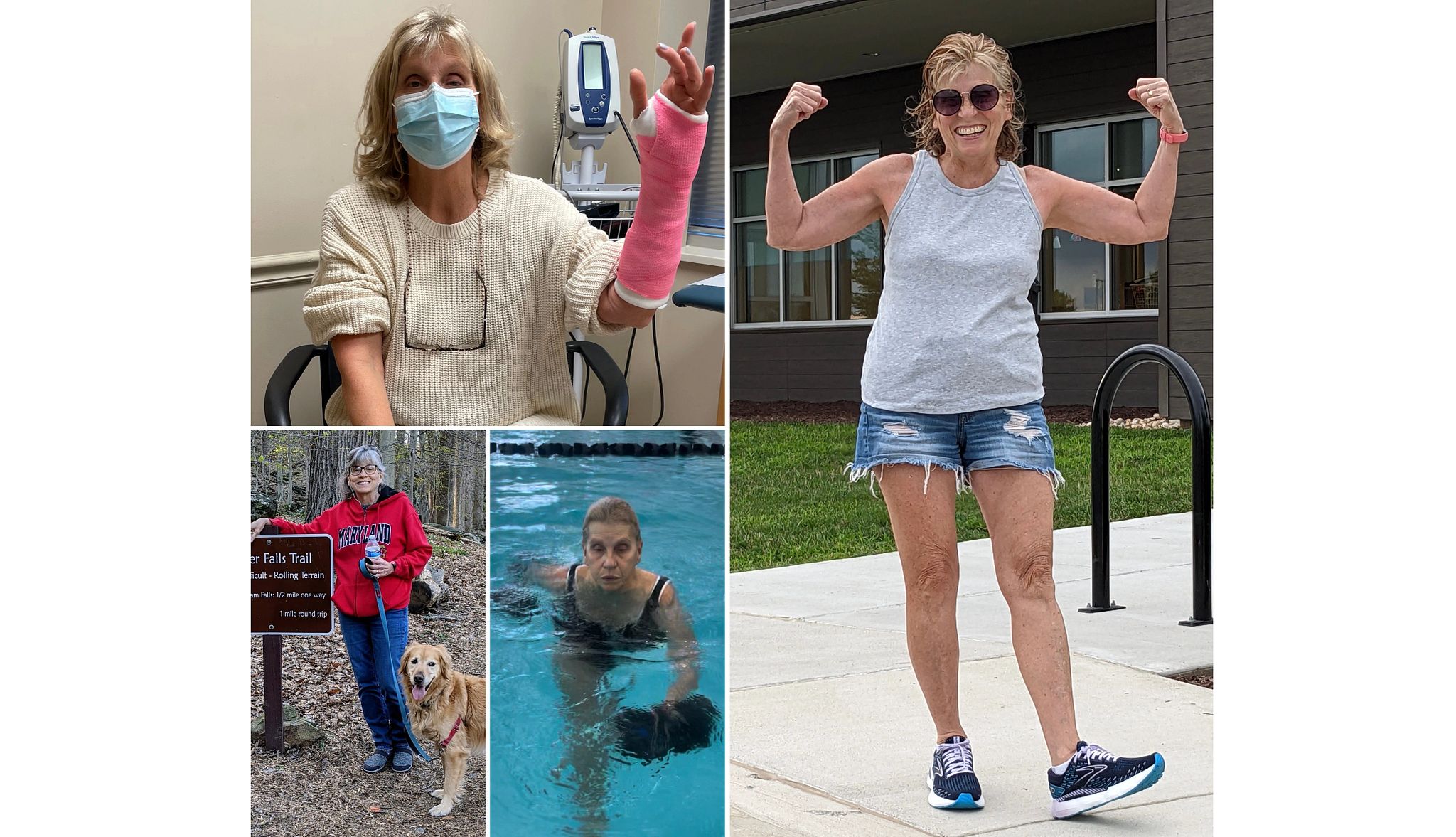AARP Hearing Center


My decade-long battle with my bones began when my primary care provider recommended getting a bone density scan in 2015, when I was 53. This was unusual, considering the U.S. Preventive Services Task Force recommends the scan for women 65 and over. But I was battling several health issues, including Crohn’s disease, and wasn’t able to be very active.
My trifecta of illness, steroid use and inactivity prompted my doctor's recommendation. When the DEXA (dual-energy X-ray absorptiometry) scan — a quick, noninvasive imaging test that measures bone density — showed that I had osteopenia, I wasn’t too alarmed. I thought, Don’t our bones naturally thin out with age?
I didn’t realize that the approaching tsunami of fractures, fear, regret and cement (yes, cement — I’ll explain this later) might have been avoided. But at the time, I filed away the DEXA scan in the non-urgent part of my brain. I had plenty of other things to worry about.
Two years later, a new physician’s assistant took my osteopenia quite seriously. She sent me for another DEXA scan, which showed that I had slipped into osteoporosis. She urged me to see a specialist. Because I had inflammatory bowel disease, I couldn’t just pop a pill. I had to commit to an infusion of bisphosphonate, a medication that slows bone loss. So I went to see a rheumatologist.


Awash in fear and misinformation
The problem was, none of the specialists offered much detail about my bones or the medication. They just urged me to take the shot. I was concerned that one of its rare side effects, osteonecrosis of the jaw, could disable mine permanently if I needed invasive procedures. So I did what many nervous patients do: I avoided treatment and fell down the Google rabbit hole of bisphosphonate horror stories.
I convinced myself that if I did chair exercises and took calcium and vitamin D, I would win this battle with my bones. But I struggled to find an exercise therapy for people like me who were unable to do all the “weight-bearing” exercises most providers and trainers were raving about.
Life-threatening crisis sparks determination
Then, in May 2019, one of my vertebrae spontaneously fractured as I was making the bed. Over the next year, four more compression fractures joined the original one. My 2020 DEXA scan revealed even more dramatic bone loss. My back began hunching as kyphosis — rounding of the spine — crept in, and my spine became unbearably painful, weak and unstable. Even getting off the toilet was nearly impossible.
I decided to try kyphoplasty, which involved injecting biomedical cement into the fractured vertebra to strengthen it. Kyphoplasty is recommended as a pain-reduction procedure for spine fractures. But I didn't have the chance to find out if it would ease the pain.




































































You Might Also Like
When Should I Get a Test for Bone Strength?
When you need a bone scan and what you can do to strengthen your bones
Yoga Poses to Fight Osteoporosis
Build bone mass with these five easy moves
32 Ways to Improve Your Bone Health
How to strengthen your bone density